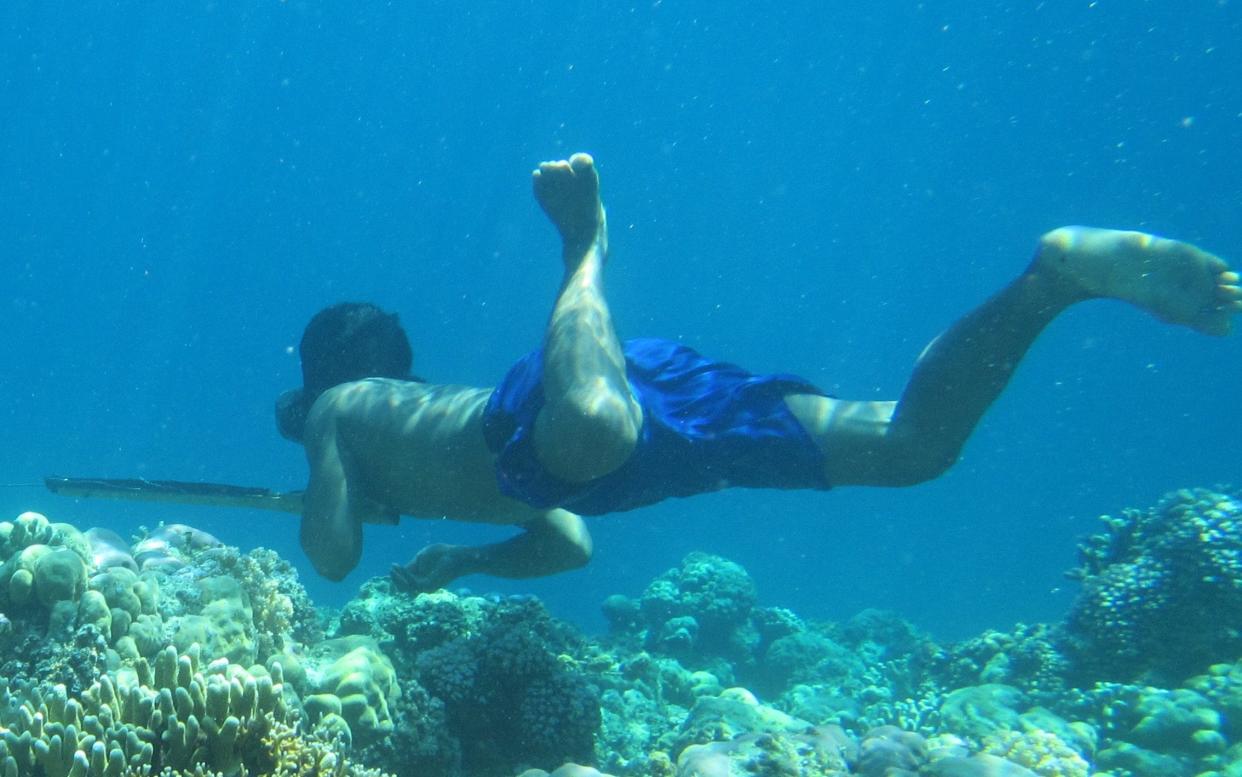Nomadic divers evolve larger spleens to stay underwater for 13 minutes, scientists find

A tribe of nomadic divers has evolved larger spleens to allow them to catch fish more than 200 feet underwater, scientists have discovered.
For more than 1,000 years the Bajau population of Indonesia, has travelled the southeast Asian seas in houseboats, collecting fish and seafood by free diving with spears.
Their nautical, itinerant lifestyle has earned them the nickname ‘sea nomads’ or ‘sea gypsies.’
But now scientists have discovered the secret to their astonishing fishing prowess. They have evolved genetically enlarged spleens which allows them to use oxygen more efficiently so they can stay underwater for longer.
Study leader Melissa Ilardo of Cambridge University spent several months in Jaya Bakti, Indonesia taking genetic samples and performing ultrasound scans of the spleens from both the Bajau and their land-dwelling neighbours, the Saluan.
The results were sequenced at the University of Copenhagen and clearly showed the Bajau have a median spleen size which is 50 per cent larger than the Saluan.

It has previously been hypothesised that the spleen plays an important role in enabling humans to free dive for prolonged periods but the relationship between spleen size and dive capacity has never before been examined in humans.
"Until now it has been entirely unknown whether Sea Nomad populations genetically adapt to their extreme lifestyle,” said Miss Ilardo, a doctoral student at Cambridge University.
"There's not a lot of information out there about human spleens in terms of physiology and genetics.
"But we know that deep diving seals, like the Weddell seal, have disproportionately large spleens. I thought that if selection acted on the seals to give them larger spleens, it could potentially do the same in humans."
Most of the Bajau community are now settled around the islands of Indonesia, where they are renowned throughout the region for their extraordinary breath-holding abilities. Some members of the Bajau claim to be able to hold their breath for 13 minutes while diving.
Using weights and handmade wooden goggles they can easily dive to impressive depths for lengthy periods.
Previously it was known that populations living at high altitude had extra lung capacity and larger heart muscles which is why Sherpas in the Himalayas can climb Everest without oxygen.

The spleen plays a central role in prolonging free diving time as it forms part of what is known as the human dive response, which is triggered as a method of assisting the body to survive in an oxygen-deprived environment.
The heart rate slows down, blood vessels in the extremities shrink to preserve blood for vital organs, and the spleen contracts which creates an oxygen boost of nine per cent by by ejecting more oxygenated red blood cells into circulation.
Researchers found enlarged spleens in non-diving Bajau individuals as well as those who regularly free dive, proving the adaptation is genetic not acquired.
The team also discovered that members of the Bajau have a gene called PDE10A which the Saluan do not. It is thought that the PDE10A gene controls the levels of thyroid hormone T4.
"We believe that in the Bajau they have an adaptation that increases Thyroid hormone levels and therefore increases their spleen size," added Miss Ilardo.
"It's been shown in mice that thyroid hormones and spleen size are connected. If you genetically alter mice to have an absence of the thyroid hormone T4, their spleen size is drastically reduced, but this effect is actually reversible with an injection of T4."
The team now hopes to study similar populations such as Thai Moken population and the Haenyeo diving women of Jeju in South Korea.
"This study is a wonderful example of the value of studying these small populations living under extreme conditions," said Professor Eske Willerslev of the University of Copenhagen, who carried out the genetic study.
"A lot of them are threatened and this is not just a loss culturally and linguistically, but for genetics, medicine, and sciences in general. There's still a lot of information to be gathered from these understudied populations."
The findings were published in the journal Cell.

 Yahoo News
Yahoo News 
